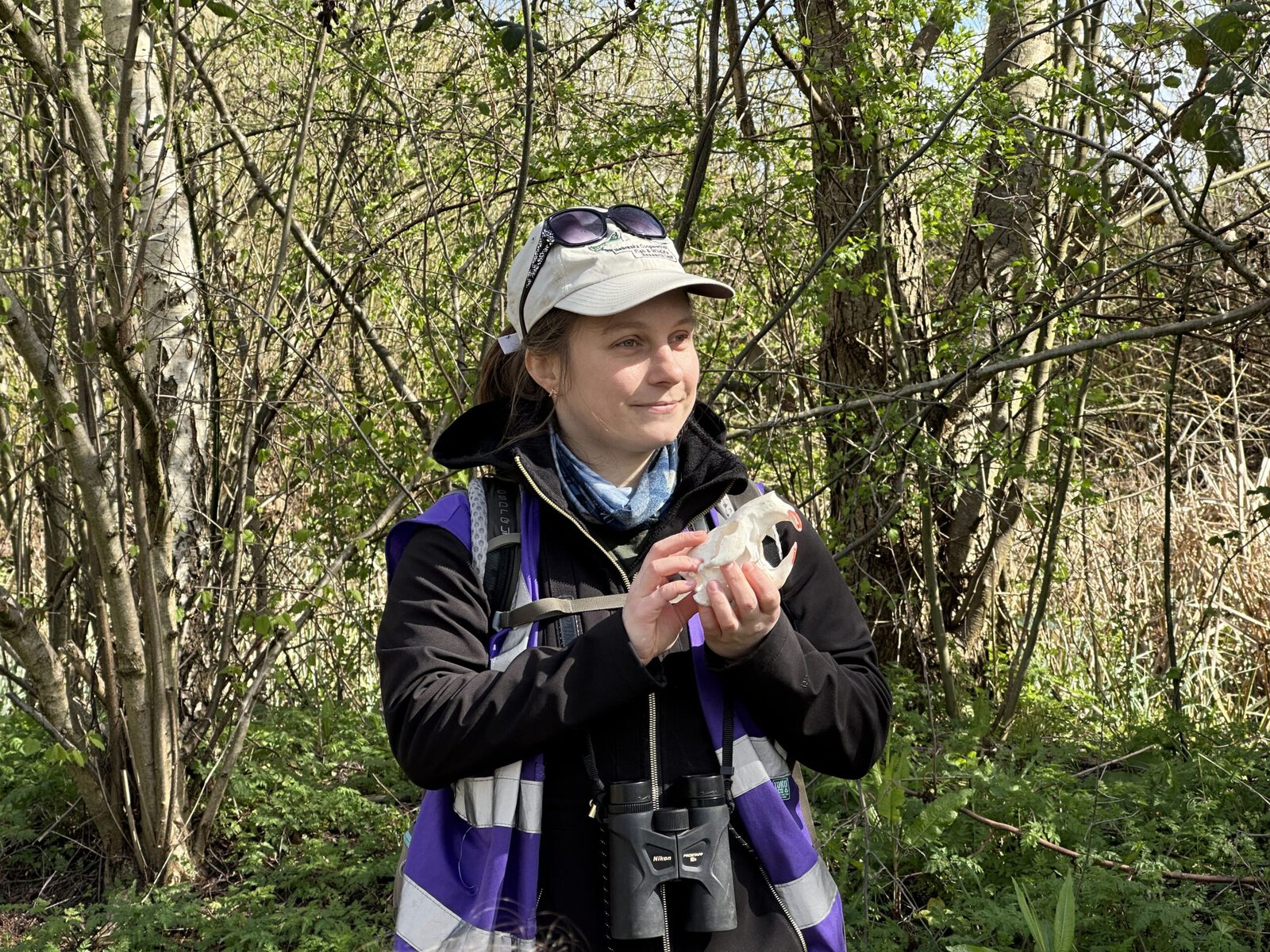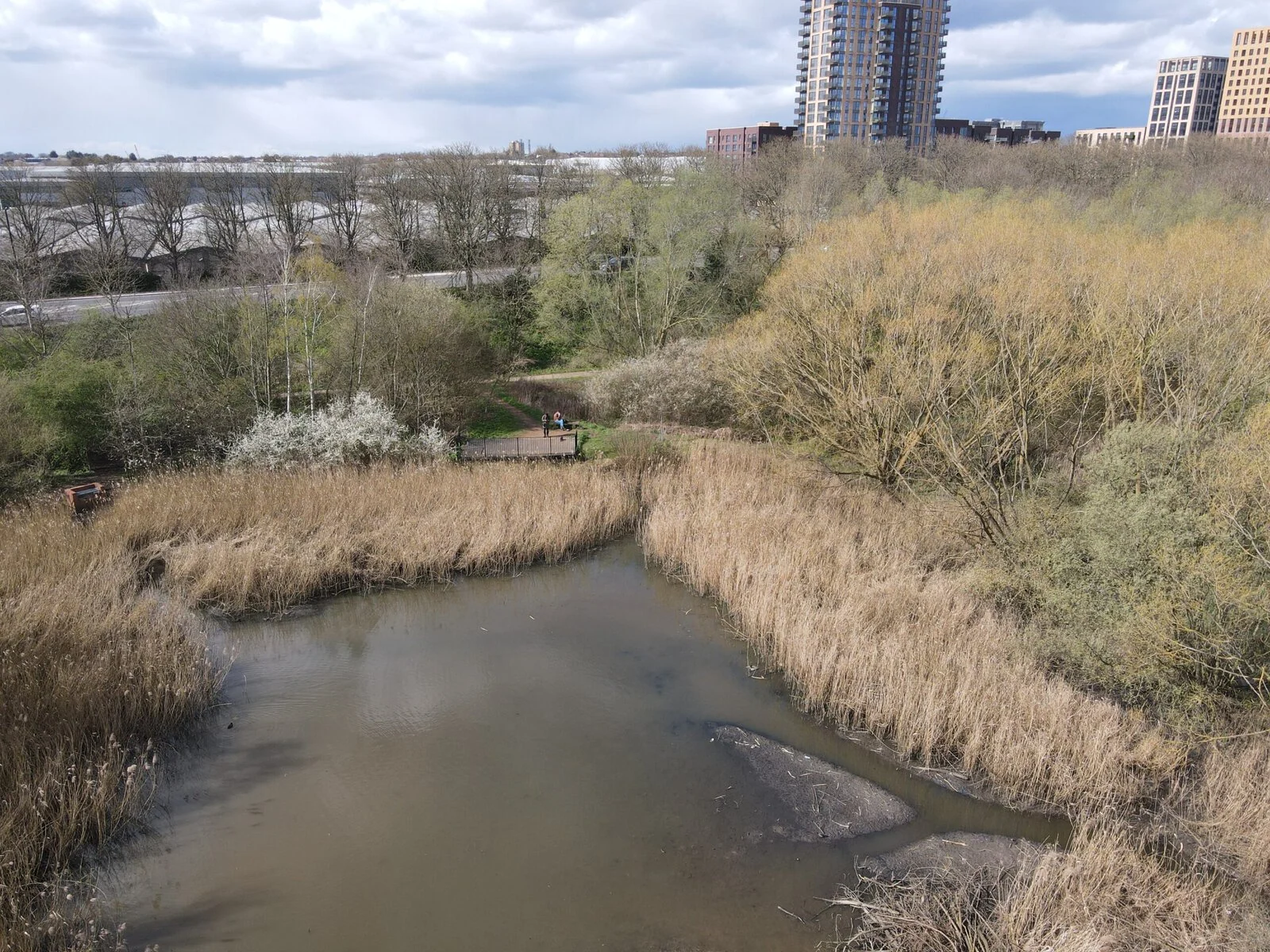Dr. Sean McCormack, chair of the Ealing Wildlife Group, says that although scientific studies are still underway, the beavers have already had an “anecdotal” impact. “A few weeks after they came, there were two massive storms that led to floods,” he says. “But three or four months later, there were more storms, and the same storm drain was only trickling. It’s because the beavers have built dams to slow the flow.”
The efforts in London are part of a trend of reintroductions across England in recent years, with beavers now in the counties of Kent, Cornwall, Devon, Derbyshire and Oxfordshire. A 2020 study of four sites across the country found the introduction of beavers led flood flows to decrease by up to 60 percent. Separate research found that there was 73 percent less sediment, including pollutants, in water downstream of beaver ponds. And a report released in March also found beavers in one project cut the impact of flooding and drought by storing three million liters of water in five years. “We are delighted that the beavers have thrived and improved the landscape,” said Matt Butcher, an Environment Agency representative, at the time.
Crushed by negative news?
Sign up for the Reasons to be Cheerful newsletter.
Taking the beaver-led approach to flood mitigation could have a significant financial benefit: The local council had earmarked Paradise Fields area for engineering works that would have cost hundreds of thousands of pounds, according to McCormack, whereas the beaver project that replaced it cost just £45,000 ($56,000) for the infrastructure such as fencing and a feasibility study. Between 2015 and 2021, the UK spent £2.8 billion ($3.5 billion) on flood defenses, with that sum set to double over the six subsequent years.
The London project, which is supported by the London Beaver Working Group and Natural England’s National Beaver Officer, comes after the English government classified beavers as a native and legally protected species in 2022, following Scotland’s move to do so in 2019.

The mayor of London’s Rewild London fund, launched in 2023, has provided £2.4 million ($3 million) to projects across the capital and has helped to create or restore around 350 hectares of wildlife habitat, including pollinator corridors, wildflower meadows and the Ealing Beaver Project.
Experts say that while rewilding efforts have in the past targeted rural areas due to land availability and the relatively few legal and bureaucratic obstacles, cities are increasingly seen as playing an important part in tackling the biodiversity crisis.
“The rewilding movement has really been growing in the past three to five years,” says Sara King, a manager at Rewilding Britain, a nonprofit advocating for the return of wild nature spaces. “Traditionally, it’s been focused on rural areas. But recently, we’re shifting towards urban areas and London is definitely leading the way.”


The 2023 State of Nature report found that 151 of 10,008 UK species assessed have become extinct since 1500 and that the UK is in the bottom 10 percent of countries for remaining native biodiversity. In order to address that decline, the government last year pledged to restore biodiversity in 30 percent of UK habitats by 2030.
“What we have to remember is that we’re one of the most nature-depleted countries in the world,” adds King. “But rewilding is really starting to build momentum. And the Ealing Beaver Project is an ambitious part of that.”
One of the key issues going forward will be managing the relationship between the beavers and local community. The beavers in London were removed from their home at the River Tay in Scotland because they were raiding crops from local farmers and causing fields to flood due to their dams. That won’t be an issue in London, but there still are other problems: For one, some members of the community damaged the metal fence installed around the park as they thought entry was being limited, even though there are several gates to enter.


